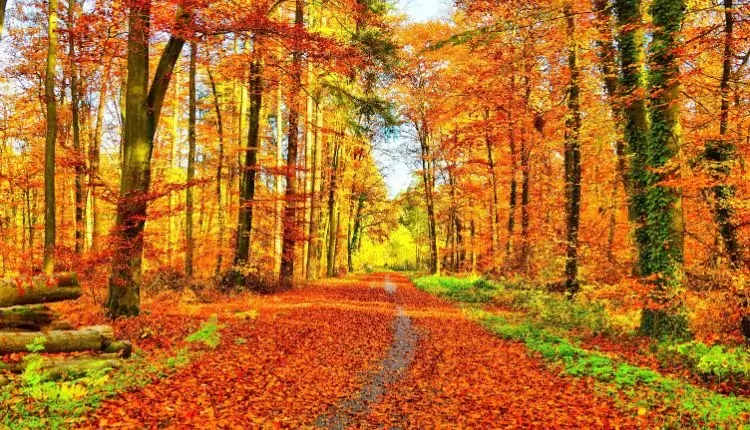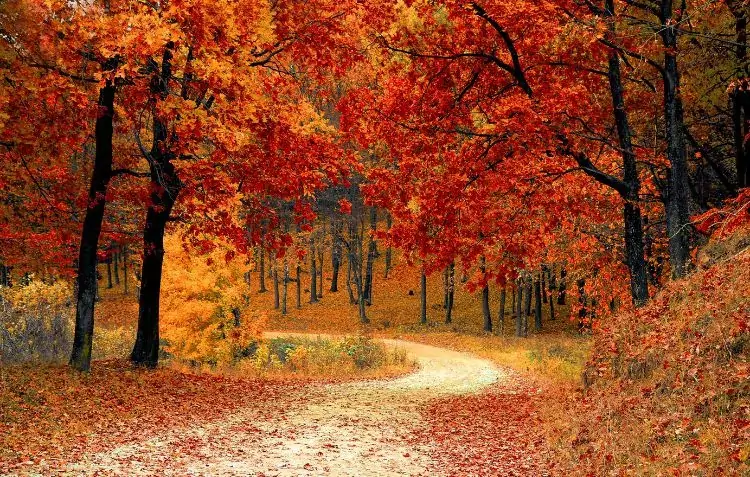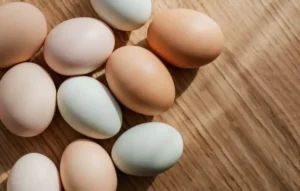Ever wondered what trees do in autumn? A fun riddle reveals the answer in a clever play on words:
“What do trees do in autumn riddle?”
Answer: They ‘leave’!
This riddle is a humorous nod to the incredible transformation trees undergo during fall. As the air turns crisp and the days grow shorter, trees shed their leaves in preparation for winter. But this process isn’t just about seasonal beauty—it’s a survival strategy deeply rooted in science.
Autumn is a season of breathtaking change, where vibrant reds, oranges, and yellows blanket the landscape. Beyond their aesthetic appeal, trees play a crucial role in the ecosystem, providing oxygen, shelter, and nutrients to countless species.
In this article, we’ll explore the meaning behind this riddle, the fascinating science of leaf shedding, and fun autumn facts that will deepen your appreciation for nature’s seasonal spectacle. Stay with us as we unravel the secrets of trees in autumn!
Table of Contents
ToggleWhat Do Trees Do in Autumn Riddle?
Riddles are a fun way to play with words while learning something new. The riddle “What do trees do in autumn?” has a clever answer: “They leave.” This is a pun, as trees shed their leaves and also metaphorically “leave” in preparation for winter.
The Play-on-Words Concept
The humor in this riddle comes from the double meaning of “leave.” In autumn, deciduous trees lose their leaves, but the word also means to depart. This clever wordplay makes learning about nature engaging, especially for children.
Why Riddles Like This Are Fun
Riddles improve vocabulary, encourage critical thinking, and make language learning enjoyable. They also create memorable associations—after hearing this riddle, kids are more likely to remember why trees shed leaves in autumn.
Autumn’s Stunning Transformation
Beyond the wordplay, autumn is a season of change. Leaves turn brilliant shades of red, yellow, and orange before gracefully falling. This transformation isn’t just for show—it’s an essential survival mechanism for trees.
The Answer to the Riddle Explained
Wordplay and puns make language fun, and this riddle is a perfect example. Let’s break down the meaning behind the phrase and why it resonates with the beauty of autumn.
Breaking Down the Wordplay
- “Leave” = Departing: The word “leave” means to go away, much like birds migrating in autumn.
- “Leave” = Shedding Leaves: Trees physically lose their leaves in autumn, preparing for the cold months ahead.
The pun works because it cleverly connects a seasonal event with a common word in the English language.
Why Puns Make Learning Fun
Puns are an excellent way for kids and language learners to understand multiple meanings of words. They also make science and nature more enjoyable by adding an element of humor.
More Seasonal Riddles for Fun
- “What is the best thing to put into a pie?” – “Your teeth!”
- “Why do leaves never feel lonely?” – “Because they hang out in bunches!”
These lighthearted riddles make learning interactive and memorable. Now that we’ve explored the wordplay, let’s dive into the science behind why trees actually lose their leaves.
Why Do Trees Lose Their Leaves in Autumn?
Trees shed their leaves in autumn as part of a natural survival strategy. This process helps them conserve energy and withstand the harsh winter months.
The Science Behind Leaf Shedding
Deciduous vs. Evergreen Trees
- Deciduous trees (maples, oaks, birches) shed their leaves in autumn to reduce water loss and energy use.
- Evergreens (pines, firs, spruces) retain their needles year-round because their waxy coating helps them survive winter.
The Role of Chlorophyll
Leaves are green due to chlorophyll, which absorbs sunlight for photosynthesis. As temperatures drop and daylight hours shorten, trees break down chlorophyll, revealing the brilliant reds, oranges, and yellows we associate with fall.
Environmental Triggers for Leaf Fall
- Shorter Days & Colder Nights – Less sunlight signals trees to stop food production.
- Reduced Water Supply – As the ground freezes, trees conserve moisture by shedding leaves.
- Hormonal Changes – Trees produce abscisic acid, which signals the leaves to detach.
How Climate Change Affects Autumn
Recent studies suggest warmer temperatures are delaying autumn’s arrival, altering when and how trees shed leaves. Scientists are tracking these shifts to understand their long-term impact on ecosystems.
Fun Facts About Trees and Autumn
Autumn is full of surprises! Beyond the colorful scenery, trees have hidden abilities that make them even more fascinating.
Trees Can Communicate? The Science Behind It
Trees are more connected than we think. They use underground fungal networks, sometimes called the “Wood Wide Web,” to communicate and share nutrients.
- Trees warn each other about pests by sending chemical signals.
- Parent trees help younger saplings by transferring nutrients through their roots.
- Some studies suggest trees can recognize their relatives and provide them with extra resources!
Not All Trees Lose Their Leaves – Why Some Stay Green
Evergreens keep their needles because they are designed for harsh winters.
- Waxy coating – Protects needles from freezing.
- Strong structure – Prevents water loss and damage.
- Examples – Famous evergreens include the Douglas Fir in the U.S., the Scots Pine in the U.K., and the Eastern White Pine in Canada.
These trees remind us that not all of nature slows down in autumn—some species thrive year-round!
The Role of Fallen Leaves in Nature

Fallen leaves may seem like simple seasonal debris, but they play a vital role in nature. They enrich the soil, support ecosystems, and even impact climate cycles. Let’s explore how they contribute to the environment.
How Leaves Help the Soil and Ecosystem
When leaves fall to the ground, they begin to decompose, creating a nutrient-rich layer known as leaf litter. This natural process improves soil health by returning essential nutrients like nitrogen, phosphorus, and potassium. These elements help new plants grow, making forests, gardens, and grasslands healthier.
Beyond soil benefits, fallen leaves provide a protective habitat for small creatures. Many insects, such as earthworms, beetles, and millipedes, thrive in decomposing leaves. They break them down into organic matter, which further nourishes the soil.
Fun Fact: Leaves Support Hibernating Animals
Some animals rely on fallen leaves to stay warm during winter. Small creatures like hedgehogs, frogs, salamanders, and insects hibernate under thick layers of leaves. This natural insulation protects them from cold temperatures and predators. Without leaf litter, many of these species would struggle to survive.
The Impact of Climate Change on Leaf Shedding
As global temperatures rise, autumn is arriving later than before. Scientists have observed that trees are holding onto their leaves for longer due to warmer falls.
- A 2021 study from the Technical University of Munich found that trees in Europe now shed their leaves about 13 days later than they did 50 years ago.
- NASA research confirms that increased temperatures extend the growing season, delaying leaf shedding in many regions.
These changes can disrupt the natural cycle of forests and affect animals that depend on seasonal shifts. Birds may struggle to time their migrations, and hibernating animals may face unpredictable weather conditions. Scientists continue to study how climate change will affect future autumn seasons.
Other Fun Autumn Riddles to Enjoy
Autumn isn’t just about cooler weather and changing leaves—it’s also a season full of fun wordplay! Here are some seasonal riddles to enjoy and share.
Playful Autumn-Themed Riddles
- Why did the tree worry about autumn?
- It was falling for it! 🍂
- Why do birds fly south in the fall?
- Because it’s too far to walk! 🦜
- What is a tree’s least favorite month?
- Sep-timber! 🌳
- What is the best thing to put into a pie?
- Your teeth! 🥧
- Why did the scarecrow win an award?
- Because he was outstanding in his field! 🎃
Share Your Favorite Autumn Jokes!
Everyone loves a good seasonal laugh! Have a favorite fall joke or riddle? Drop it in the comments and spread the autumn cheer! 🍁😄
Conclusion & Key Takeaways
The riddle “What do trees do in autumn?” is a clever play on words: “They leave.” This phrase highlights both the literal act of trees shedding leaves and the idea of “leaving” for the season.
Key Points to Remember:
✅ Trees lose their leaves in autumn to conserve energy for winter.
✅ Fallen leaves enrich the soil, protect small creatures, and support ecosystems.
✅ Climate change is delaying autumn, affecting leaf shedding patterns worldwide.
✅ Seasonal riddles make learning about autumn fun and engaging!
🍂 What’s your favorite thing about fall? Let us know in the comments below!
If you enjoyed learning about what do trees do in autumn riddle, explore more insightful articles on lifestyle, fashion, and culture at The Fast Upload. Stay informed with engaging and well-researched content!
FAQs
Why do leaves change color in the fall?
As daylight decreases and temperatures drop, trees reduce chlorophyll production, revealing other pigments like carotenoids and anthocyanins, which give leaves their vibrant autumn hues.
Is fall a good time to plant new trees?
Yes, autumn’s cooler temperatures and increased rainfall create ideal conditions for planting trees, allowing roots to establish before winter. However, it’s advisable to plant at least 4-6 weeks before the ground freezes.
How should I care for my trees during autumn?
Fall is an excellent time to inspect trees for dead branches or signs of disease, apply mulch to protect roots, and ensure adequate watering, especially during dry spells, to prepare them for winter.
Why do some trees retain their leaves longer into the fall?
Certain species, environmental factors, and weather conditions can cause some trees to hold onto their leaves longer, with variations in temperature and sunlight influencing the timing of leaf drop.
When is the best time to prune trees in the fall?
It’s generally recommended to avoid pruning in early fall, as it can make trees more susceptible to frost damage and diseases. The optimal time for pruning most trees is during their winter dormancy, typically from late winter to early spring.













